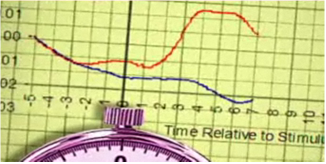

5 stages:
First of all, a frame represents a schema of interpretation (a collection of anecdotes and stereotypes) which individuals rely on to understand and respond to events.
In others words, a frame is a combination of mental filters generated by biological and cultural influences, and people use these filters to make sense of the world.
Framing then consists in influencing an individual's perception of an event by selecting particular words, sentences, context. It results in selecting the elements
of rhetoric in such a way as to encourage certain interpretations and to discourage others. In simpler terms, framing is about placing
an event in a particular frame, which will appeal to an individual/group in a specific way.
Amos Tversky and Daniel Kahneman have shown that framing can affect the outcome of choice problems, to the detriment of rational choice theory — which led to the
development of prospect theory as an alternative.
The context or framing of problems adopted by decision-makers results in part from extrinsic manipulation of the decision-options offered, as well as from forces
intrinsic to decision-makers (e.g. their norms, habits, personality, etc).
Priming is an implicit memory effect in which exposure to a stimulus or cue (perceptual, semantic, or conceptual) influences a response to a later stimulus. In other
words, being exposed to certain things will influence our behaviour later on.
Positive and negative priming: a positive prime speeds up processing, while a negative prime lowers the speed to slower than un-primed levels. Positive priming is caused by simply experiencing the stimulus, while negative priming is caused by experiencing the stimulus, and then ignoring it.
The effects of priming can be very salient and long lasting. Priming is thought to play a large part in the systems of stereotyping.
The reason is that attention to a response increases the frequency of that response. The attention given to these response or behaviours
primes them for later activation.
This can occur even if the attended response is not desired, or if the subject is not conscious of the priming stimulus. This can be used for subliminal messages (e.g. subliminal images).
An example of this was done by Bargh and others in 1996; subjects were implicitly
primed with words related to the stereotype of elderly people (example: Florida, forgetful, wrinkle). While the words did not explicitly mention speed or slowness,
those who were primed with these words walked more slowly upon exiting the testing booth than those who were primed with neutral stimuli. Similar effects were found
with rude and polite stimuli: those primed with rude words were more likely to interrupt an investigator than those primed with neutral words, and those primed with
polite words were the least likely to interrupt.
A Harvard study showed that something as simple as holding a hot or cold beverage before an interview could result in pleasant or negative opinion of the interviewer.
Experiment: a man asks a participant in a lift to hold a glass filled with a hot or cold drink a few moments for him; the participant is then asked what he/she thinks
of the man, in particular whether he/she would give him a job. If the case of a hot drink, the participant had positive feelings, and would give him a job. In the case
of a cold drink, it's simply the contrary! Thermal heat is well-perceived.
Everybody has emotions when confronted to certain situations; the area of the brain dealing with emotions is the amygdala. Frontal lobes then come into play
in order to control those emotions, to an extent which varies according to the individual.
Wellcome Trust Center for Neuroimaging
Research conducted by De Martino, Camerer and Adolphs also suggested that the amygdala plays a key role in generating loss aversion (e.g. fear of losing money as
a result of risky decisions).
Experiment with 2 groups of people: in the first one, participants receive money then are given the choice whether to keep it or to play part of it to win more; in the second group, participants receive the same amount but part of it is withdrawn soon after, and they are given the same choice. It has been observed that the second group plays more, as people want to compensate for the loss.
Experiment: participants are asked to choose between 2 photos showing the same person slightly differently (e.g. with different hair cuts). A minipulation then provides the individual with the picture not chosen, who is then asked to justify his "choice". Participants don't see the manipulation, and believe they get the picture they chose; they would then justify the choice they didn't make.
Quantum physics supposes particles which are not influenced by the direction of time (rules are symetrical relative to time); Dean Radin, from the Institue of Noetic Sciences, believes that consciousness has the ability to behave so in certain circumstances, and could know the future.
Experiment: participants are shown random images, either peaceful or emotional. Their reaction is captured by measuring the conductance of the skin. Before an emotional image (about 2 seconds), conductance increases, apparently in anticipation.

* * *